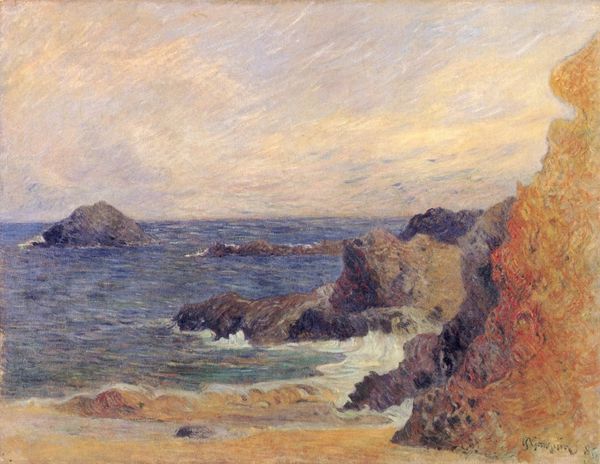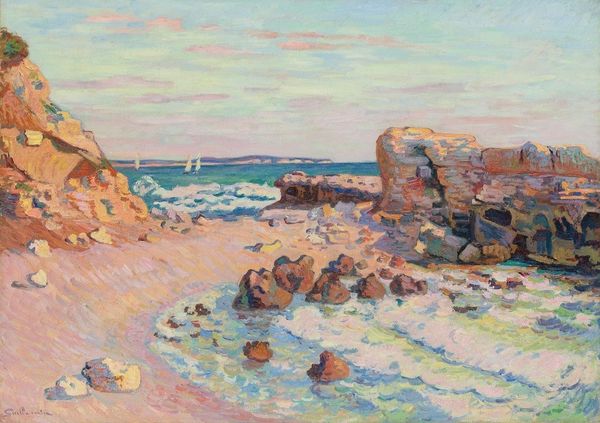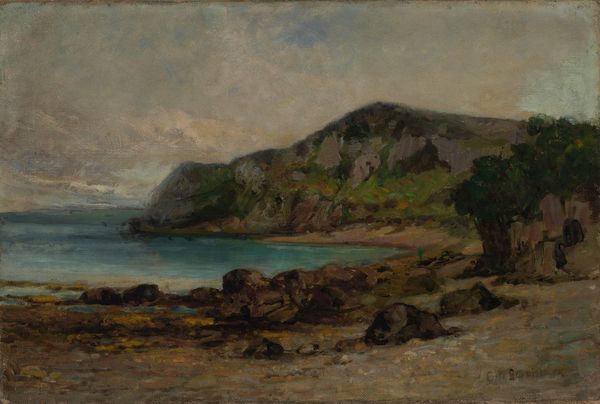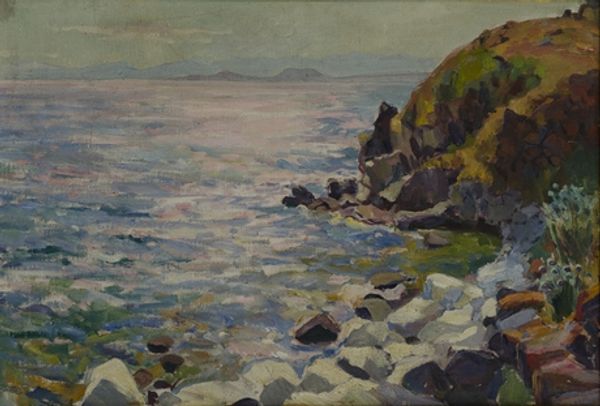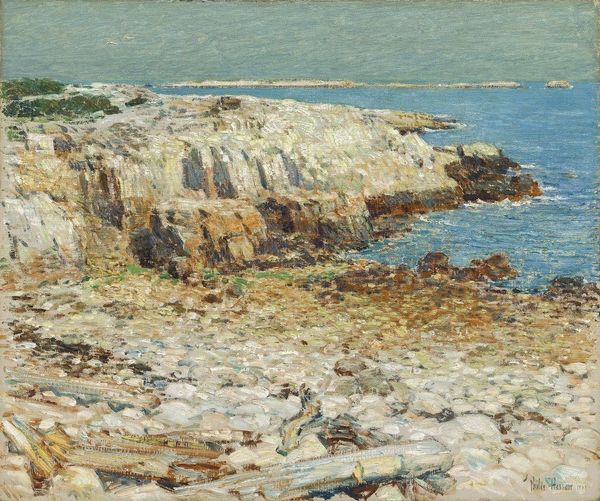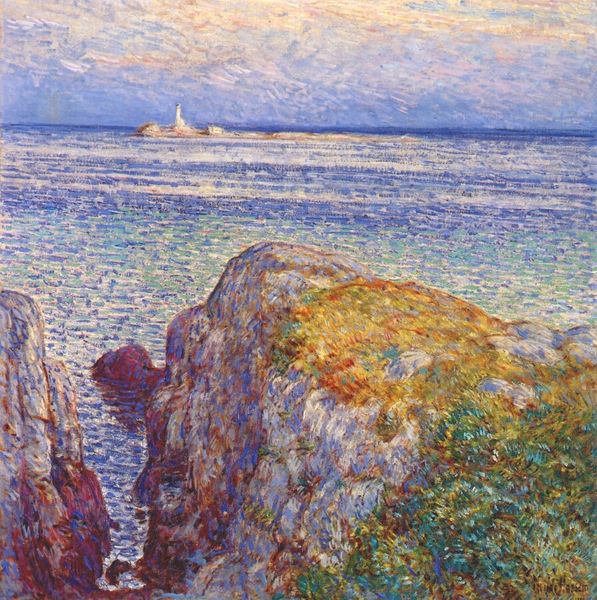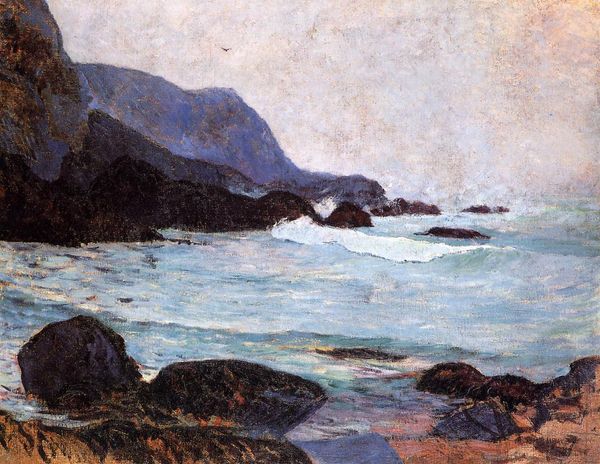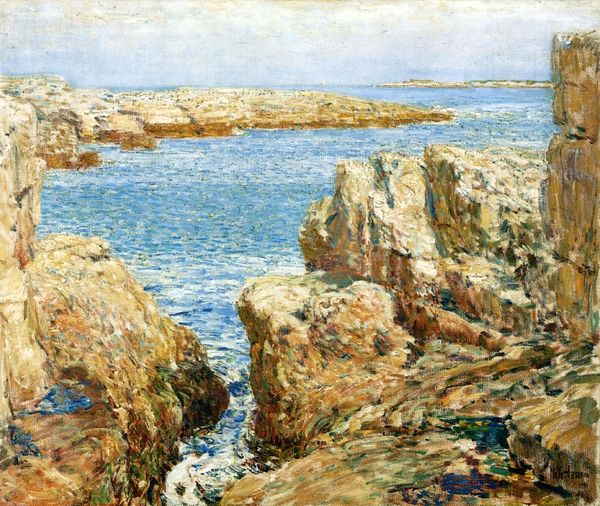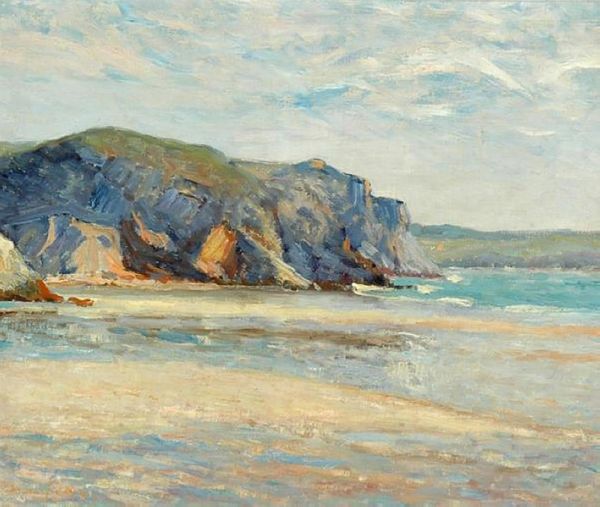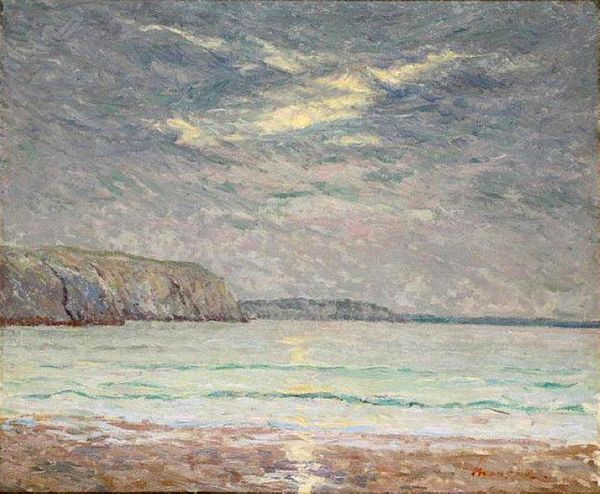
Copyright: Public domain
Curator: Here we have Maxime Maufra’s 1901 oil painting, "The Village, Morgat." Maufra was a Post-Impressionist artist particularly drawn to the landscapes of Brittany. Editor: My first impression is the incredible texture! You can really see how the brushstrokes build up to create the light and surface quality. Curator: Indeed. Look closely at how Maufra uses dashes and dabs of color, particularly in the sky and water, to convey movement and light. He was devoted to working *en plein air*. Can you imagine him on the Brittany coast fighting wind and weather to complete the painting on site? Editor: Absolutely! And think of the physical act – the pigment mixing, the repetitive motion of brush against canvas to catch the fleeting impression of a coastal sunset. It speaks volumes about Maufra’s dedication. Did local access to materials play a role in his style here? Curator: Perhaps subconsciously. But Brittany had powerful significance for artists; it represented a wild, almost untouched part of France with pre-Christian history and its own culture that appealed to the fin-de-siecle avant-garde, an escape from modernity’s grasp. It evoked ancient symbolism and an enduring connection to nature. Editor: You can definitely sense that resistance to industrialization in the image. Maufra’s brushwork embraces the irregularities, reflecting natural processes over mechanized production. It seems that the landscape, both physical and cultural, provided a fertile ground for artistic experimentation. Curator: I think so too. It represents an urge to connect with primal landscapes. A yearning that persists. Editor: Definitely a visceral reminder of our connection to materials and to a sense of place rooted in direct experience.
Comments
No comments
Be the first to comment and join the conversation on the ultimate creative platform.
